|
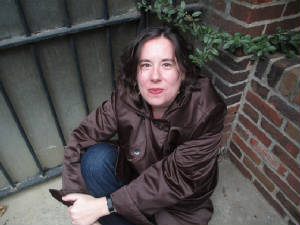
Kristi
Petersen Schoonover’s short fiction has been featured in The Adirondack
Review, Barbaric Yawp, The
Illuminata, Carpe Articulum Literary Review, Afternoon, I Like Monkeys, New
Witch Magazine, MudRock: Stories & Tales, other literary publications
and anthologies. She is the author of two books: Skeletons in the Swimmin’ Hole:
Tales from Haunted Disney World
(Admit One Literary Theme Park Press, 2010), her collection of ghost stories
set in Disney Parks, This Poisoned Ground
(Dark Alley Press, 2014), and her Pushcart-nominated novel Bad Apple (Vagabondage
Press Books, 2012).
Schoonover is
co-editor for Read Short Fiction. She
holds a BA in Creative Writing in Literature from Burlington College in Vermont
and an MFA in Creative Writing from Goddard College. She lives in the
Connecticut woods with her housemate, Charles, her husband, Nathan, and three
cats, and she still frequently goes to bed with the lights on.
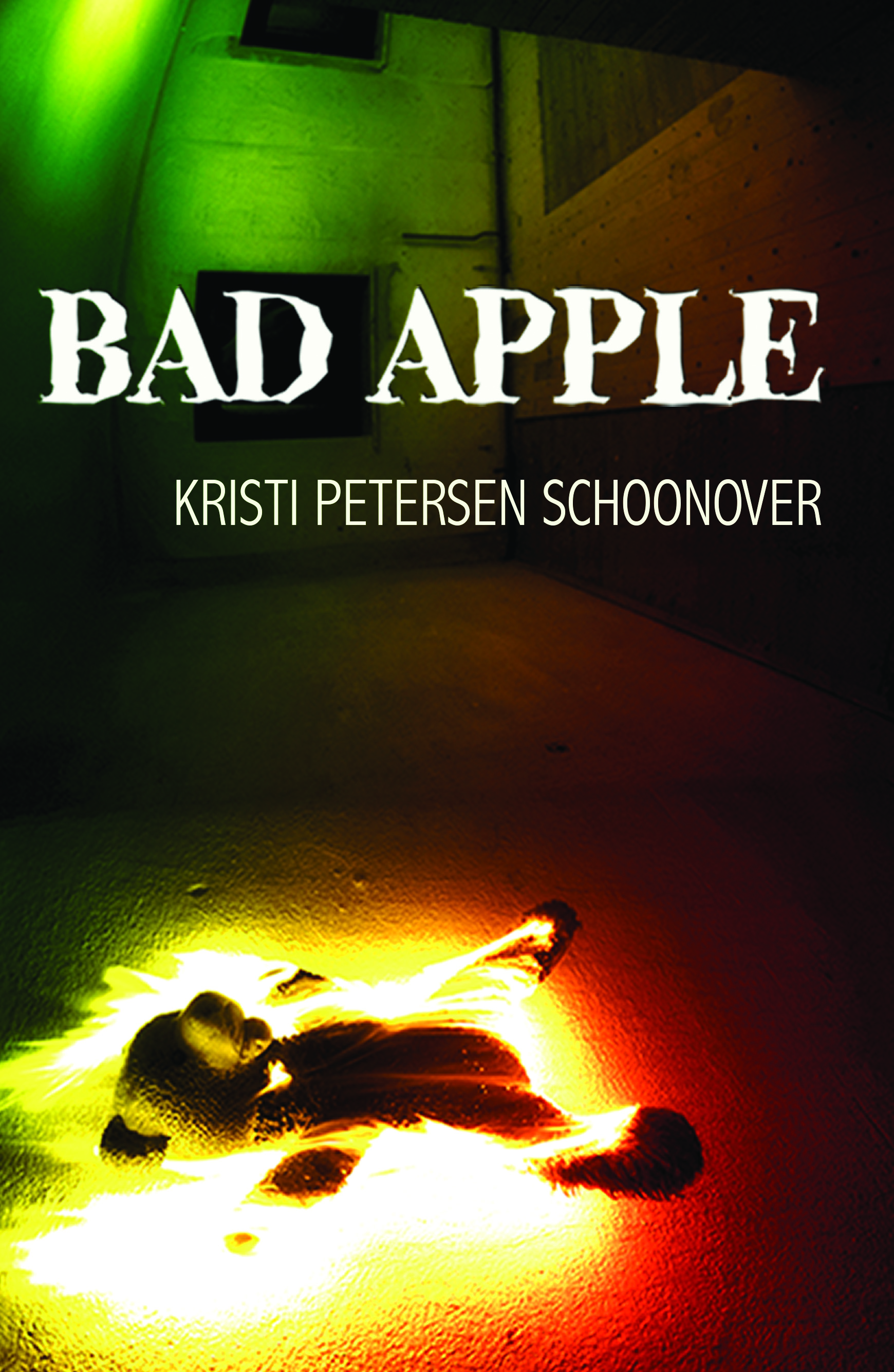
BAD APPLE
“After an unfortunate incident on a Maine
apple orchard, precocious teen Scree is left with a father she’s not sure is
hers, a never-ending list of chores and her flaky brother’s baby, who she is
expected to raise. In a noble move to save the child from an existence like her
own, Scree flees to a glitzy resort teeming with young men just ripe for the
picking. But even as life with baby becomes all she’d dreamed, Dali-esque
visions begin to leach through the gold paint… Bad Apple is a dark, surreal
ride that proves not all things in an orchard are safe to pick.”
Zinta for The Smoking Poet: Kristi, welcome to the pages of The Smoking Poet, where we have
previously enjoyed reading about your first book, Swimmin’ Hole: Tales from
Haunted Disney World. This time, we’d
like to talk to you about your novel, Bad
Apple. Can you give our readers a synopsis of Bad Apple?
Kristi Petersen Schoonover: Honestly, the back of the book pretty much sums it up; I think
revealing more would ruin it because of the nature of its ending.
Zinta: Tell
us how Scree was born … in your imagination. What inspired her?
What shaped this fascinating and complex character?
Kristi: My characters
just “show up,” really; Scree, like so many other
characters in my body of work, walk into my life uninvited ninety-five percent
of the time (I can tell you there are only about six stories in my entire canon
in which I intentionally wrote the story because I had a character in mind). In
this case, I was on a writer’s retreat at a house in Maine. It was very hot,
and the view out my windows were these trees in a large field, and I thought,
“that reminds me of the apple orchard I used to visit when I was a kid.” And
then, Scree, and her whole story, showed up. The first draft of Bad Apple was
written in 2005, and it
wasn’t until many years later—during the process in which I was working on
revisions with the publisher—that I realized Scree was really just the young
me: an abandoned, lonely, confused youth caregiver trying to simultaneously
recover her stolen childhood and seize a hopefully better, happier, freer adulthood.
Zinta: This
surreal quality in the story sneaks up on us, the readers. All
seems normal enough … well, quirky, but a normal quirky … and then something a
little off happens here, a little more off there … and gradually you realize
you are in some kind of a carnival world of mirrors, where nothing is what it
seems. Do you get a little, hm, off when you are writing about such characters?
Like actors who get deep into their roles while working on a movie?
Kristi: I spent
many years acting in community theatre, so I naturally am able
to separate the life “on-stage” from “off-stage”—I’m able to be that character only during the time I’m writing her. Part
of this comes from the acting training in which you’re taught that a character
isn’t a mask you put on; she’s a piece or side of you that comes up and out of
you. So she’s easy to “put away” when your time with her is over—she’s always
there, inside you, all the time anyway. So when I’m not (mentally) walking
around in the universe, I’m just the same old me.
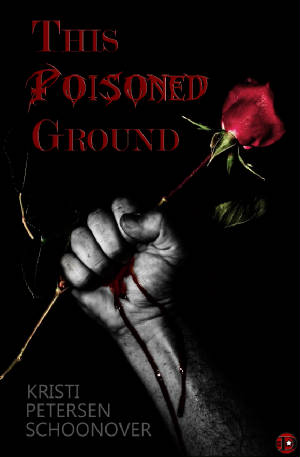
Zinta: Not sure
I’d call this a horror novel, although it gets into some
pretty uncomfortable and dark places, but you’ve delved into horror in your
body of work. I understand Edgar Allen Poe is your favorite author?
Kristi: Poe
has always appealed to me because his work is so multi-leveled;
there is much more going on in any one of his given stories than appears on the
surface. There is an overwhelming feeling of sadness which comes through his
text; he writes, primarily, about heartbreak: the heartbreak of loss, the
heartbreak of something once-great falling into decay or being destroyed; the
heartbreak of injustice (I’ve found that if you look deep enough into each
piece, one of those three things is at its core). What’s also there is the
tenet that a person—any person—can be triggered into madness, whether it be
through guilt, passion, oppression, or circumstance.
Zinta: What
about that genre works on you?
Kristi: Horror—or
at least the type of subtle horror that I prefer—is really
about what it means to be alive. “The Tell-Tale Heart” is scary because it
takes the universal fear that we’ll be punished for our sins or crimes one day.
Jackson’s “The Summer People” is scary because it plays on our fear of
isolation. “The Monkey’s Paw” is scary because it suggests that we really do
have control over our own fate to an extent and that doesn’t always go well. Horror
is scary because it gives body to our fears; it makes them tangible. When I am
done reading a well-written horror story, I have a better understanding of
myself—and others.
Zinta: Is there
a special meaning to the bear that fell down in the well? I
puzzled over that … the girl Scree is so attached to this bear that is lost to
her early on, but returns to her throughout the story. A symbol of childhood
that remains with her?
Kristi: She’s
haunted by something she lost. The bear is also a symbol of her
own childhood, which was stolen from her when she had to become “grown up”
herself to raise the baby and do the chores. She spends the book seeking not
necessarily bear, but what “bear” represents: her innocence, that time in her
life when she was free to grow, free to play, free to be.
Zinta: Your
writing is beautiful, rich with detail, and alive. What was the
path that led to that quality?
Kristi: The
expected answer, and the right one, is that I spent many years
reading good writing, and many years studying good writing and honing my craft.
But that’s really only part of it. I think the key to writing richly is to step
into the story and see it—like a movie in your head—and simply describe what
you see, hear, feel, taste, and smell. Don’t worry about words, don’t worry
about sentence structure, don’t worry about anything as you write the first
draft, because crafting—that process of cleaning up and working with the
language—is what you do after the draft is done. Let it flow the first time;
you’ll find you have better raw material to work with.
Zinta: The background
of the story, its scenery, is rich, too. Is it based
on an actual place? Did you enjoy wandering haunted places as a child … perhaps
still do?
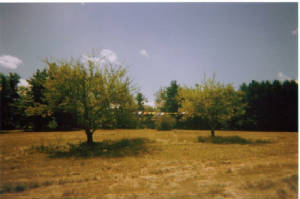
|
| 1 Inspired the Orchard* |
Kristi: I’ve
always been very big on setting as a character in stories; this
probably comes from the fact that as a child, I never wanted to be where I was:
I always wanted to live or be in some better environment. Hence, most of my
stories are set in real-life places, and I’m a stickler for accuracy. Several
settings in Bad Apple are based on
real places; I’ve only changed names in a couple of spots. The
Beechwood-by-the-Sea Inn where Scree gets a job is based on a place I full-time
waitressed when I was in college: The Larchwood Inn in Wakefield, RI, which is
now, sadly, abandoned. It’s the Larchwood that had all the plaid vests, the
obsessive napkin folding, and the rooms with different color schemes and china.
And some of the characters she meets at The Beechwood are based on the people
with whom I worked (although their names and clear identifiers have been
altered). That’s probably why that part of the book feels so alive; it came
more out of my memory than my imagination. The cake shop Frannie visits is
based on the place from which I bought my cake for my first marriage’s
reception, and the baker is much like the woman who baked my cake. Conversely,
some settings are places from the past that are gone, or places I’ve never
been. Another of Bad Apple’s settings
that’s real is the resort. It’s based on an old Borscht Belt jewel in the
Catskills called The Pines. This setting required lots of research and studying
of old photographs, because now the place is abandoned, and even though I have
visited it a few times, I’m not gutsy enough to venture inside—it sounds
unbelievable, but if you stand as far back as several hundred feet from the
broken front windows you’re still not safe from being overwhelmed by the smell
of mold and rot. Makes you think twice about venturing in—materials which have
decomposed to that point release bacteria and harmful toxins that can make a
person very sick, causing everything from rare lung infections to
hallucinations.
Zinta: Do you
believe in the supernatural? See ghosts? Hear hinges squeak?
Kristi: I do
believe in the supernatural—I’ve seen, heard, and felt some
things I simply can’t explain away, yes, it scared me. But who’s to say
“ghosts” aren’t just a product of some branch of physics we don’t yet
understand? Supernatural truly implies what it means—it’s beyond what we
understand as natural. And until we can understand it, it’s going to continue
to be scary because it’s unknown.
Zinta: Do you
scare yourself?
Kristi: I have
a wild imagination, so I frighten easily, but it’s mostly a
direct result of someone else’s work. I’m never scared of anything I’ve created
in my own work, and I think that’s because I am the “puppetmaster,” if you
will: in my own worlds, I’m in control of what happens in them, how ugly that
monster is, where he came from, and when he appears. It’s like riding through
Disney’s Haunted Mansion with the lights on. When you see how everything works,
it’s suddenly not scary.

|
| 2 The Larchwood Inn* |
Zinta: Fifty
percent of your royalties from the sale of Bad Apple are being
donated to the American Association of Caregiving Youth. Tell us about that …
Kristi: The
whole process was interesting. I should probably define who
caregiving youth are first. From the AACY website: Caregiving youth are
children and adolescents who look after someone in their family who has an
illness, a disability, frailty from aging, a mental health problem or a
substance misuse problem. They take on practical and/or emotional caring
responsibilities that normally would be the role of an adult…In addition, many
caregiving youth also have responsibilities for younger brothers and sisters
and all or most of the household chores.
Right around the
time Bad Apple was published, I was
surfing the web one day and saw a CNN headline that had something to do with
children taking care of sick adults. I remember thinking, ‘hey, that’s what I
did growing up!’, so I checked it out. By the end of the article, I had figured
out two things. The first was that I had been a youth caregiver. I took care of
my brothers and sister and my Mom when she was sick, and I’d never thought this
was anything extraordinary. I knew it had screwed me up, but I never really
thought that there were other people out there like me who had done the same
thing; I was as lonely with the damage from it as an adult as I was in the
situation as a youth. The second was that Bad
Apple, at its core, was really the story of me. Told through a purely
fictional lens to make it interesting—it’s not a memoir, it’s a metaphor—but it
was really a depiction of my younger years. I hadn’t consciously thought that
when I was writing it. It was something my body still needed to process, and Bad Apple
is how it did it.
I thought that if
there had been an organization like this when I’d been growing up, maybe my
life would’ve been different. Maybe I’d have grown into a stronger adult. And
so I decided that I should donate to them. Maybe a few of my dollars will make
a difference in a struggling youth’s life. Maybe it will give him or her an
opportunity I never had.
For as long as
Bad Apple is in print, I will donate 50% of my
royalty checks to the AACY. In addition, $3/per every print copy I hand-sell
myself (such as at a con or speaking engagement) will be donated to the AACY.
You can learn more about them at www.aacy.org
Zinta: You’ve
stated elsewhere that you developed yourself as a writer
without support. Tell us about that … and how you became your own support
system. What kind of support does a writer ideally need, if any?
Kristi: I was
referring to my parents when I was growing up. They simply
didn’t want me writing, and they made that pretty clear, down to forcing me to
play an instrument, sing in church choir, take gymnastics (and after Mom died
it was raising all my brothers and sisters—there was always something I was
supposed to be doing instead of writing); they generally frowned upon me
spending any time with typewriter. That’s why I loved going to school so much—I
wrote in notebooks on my lunch break, at recess, in study hall, because the
support I did get was from all of my friends (and my aunt and cousin),
especially once I got to high school. I also had a few great teachers who
supported me and praised my work—but they couldn’t really give me the guidance
I needed in order to know what to do with it beyond submitting it to the school
magazine (which I did, of course, and everything I submitted was published, but
it was high school, they probably published everything). I had one teacher in
high school who told me that I should be submitting work, but this was back in
the late 1980s, and submitting was a different game back then; you didn’t just
jump on the Internet: there was a physical process, typing it up error-free,
including an SASE, mailing it out, and to find what few markets there were
buying work you had to go to a library and look it up in an actual directory
that was much like a phone book. Doing all that without your parents cheering
you on wasn’t exactly easy. It wasn’t until I got to college that I finally
learned about having writing friends, getting criticism, working on the craft and
what being a writer on a professional level really meant.
Writers need
support on many levels. If I had to boil it down, a writer needs to have other
writers to confide in, people who understand him; a good mentor or two along
the way; a group of people to offer criticism and feedback in order to help him
to improve; and a cheering section—those people who aren’t writers that think
everything you do is awesome; those people who really believe in you (like your
parents and friends). I mean that.
Because when you’re having a bad day, a really nice compliment out of nowhere,
or just some happy encouragement, can mean the difference between contemplating
giving up or getting back on the horse.
Zinta: Are you
a writer who reads a great deal while you write—or avoid
reading at all? Seems writers fall into those two groups, one with the fear of
losing their own voices while working on a project, the other looking for a
regular injection of inspiration.
Kristi: I love
to read and always have; for me, it’s always been an escape. If
it’s high quality writing, then I will see the world that’s on the page in my
mind, as though I’m in a movie (if something is poorly written or I’m bored, it
won’t “visually translate” to me, so I put it down without finishing it).
Whether or not I read something while I’m writing, then, really depends on the
particular project. When I was writing Bad
Apple, I didn’t read anything—but that was just because I was so deep into
my own world I needed to stay there: I needed to keep seeing the own movie in
my head and not watch someone else’s, not because it was going to affect my
writing style, but because it was going to pull me out of my universe. Conversely,
when I was writing “This Poisoned Ground” – which really needed to be a
Poe-esque piece – I’d re-read one of my favorite Poe short stories to keep me
on track. On the flip side, sometimes I start reading—a particularly good book
of short stories, for example—and I have to stop because I get so inspired I
need to go write. When I’m not writing anything, I have to be in the mood
to read a particular title, and
then I tend to be a “binge” reader: I’ll railroad to the end, and if it’s
excellent I’ll study it and take notes. This might sound like a great system,
but the disadvantage is I just can’t get through all the books I’d like to read
in short order. I’ll have a book on my shelf two or three years sometimes
before I get around to it.
Zinta: You’ve
been both traditionally published and self-published. How do
the two differ in your experience?
Kristi: While
I enjoyed both processes, I definitely prefer being
traditionally published, only because I’m part of a team: I’m a cog in the
wheel, and there’s always support and counsel right there; there are people to
call who are as excited about your project as you are and who want to see you
succeed as much as you do. Self-publishing was incredibly liberating, but it
was also all on me from soup to nuts: who to hire to edit, who to hire for a
book cover and layout, who to hire to handle setting up distribution—sure,
there’s CreateSpace now, but a great tool is nothing if you don’t know how to
use it. I probably wouldn’t self-publish
again unless I had another Disney ghost story book.
Zinta: You’ve
been on a couple of residencies to further your writing
career. What did those do for you? Is it important for a writer to sometimes
check out for the world out there to withdraw for a while to the world in here?
Kristi: The
best part of a residency, for me, is always being in a new
environment—there’s something incredibly inspiring about different
surroundings: different smells, different sights and sounds, different people.
Each time I went, I came home with new stories inspired by that. The second
best part of a residency is having quiet time to focus only on writing. It’s
amazing how, in the day-to-day, there’s constant distraction. At a residency,
there really isn’t anything else to do but read or write: no cleaning, no
social obligations, no bill-paying or laundry: all I have to do is make sure I
have wine, food, some books, and something to write with. In fact, it’s tough
to get used to; the first couple of days I usually have to spend just settling
into a new routine.

|
| 3 The Pines |
Zinta: What
new projects are you working on, Kristi?
Kristi: I have
one short story I’m focused on at the moment. I have several
others written I’d like to clean up—apply the critique I’ve gotten from my
writer’s group and writing friends—but those are on the back burner. This
really isn’t a “writing” year for me; I’m focused on some other, non-writing
projects, so I’m only writing when the mood strikes. But that’s not ever a bad
thing. I don’t believe in writer’s block. If I’m not in a place to create, I
get to work on other things. “Block” really just means my body is taking a
much-needed break to grow.
Zinta: Where
can readers learn more about you and your work?
Kristi: The
best place to visit is my website, www.kristipetersenschoonover.com.
The “Read My Work” tab has links to several stories published in literary
magazines, which you can read for free. But just about everything you’d ever want
to know (and some not, maybe!) you’ll find over there, including links to my
Facebook and Twitter accounts.
Zinta: Thank
you, Kristi.
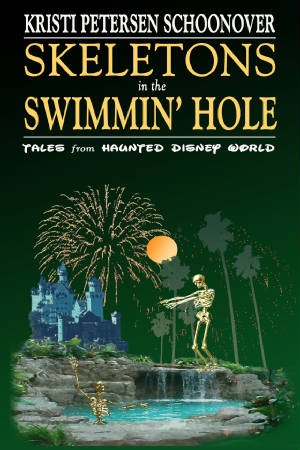
CAPTIONS
1 Inspired the Orchard
These trees, on the property
of a writer’s retreat near Casco Bay, Maine,
were what inspired the orchard setting in Bad
Apple. The opening scene of the book was written on that retreat in
September, 2005.
2 The Larchwood Inn
Schoonover worked as
a full-time waitress at The Larchwood
Inn in Wakefield, RI, back
in the early 1990s. Her experiences
there that inspired Scree’s job and The Beechwood-by-the-Sea Inn. This old
postcard shows the inn when it was in full operation as a thriving restaurant
and inn. It closed its doors in 2006, when Schoonover’s former bosses could no
longer keep it due to a death in the family and costly required upgrades. The
property has changed hands several times in the past eight years.
3 The Pines
The abandoned Pines resort
in an area of the Catskills, New York, called The
Borscht Belt. The Borscht Belt resorts—in their heyday between the 1940s and
1960s and now mostly gone forever—catered to summering Jewish clientele.
Several, such as the Heiden which was featured in the film Sweet Lorraine, burned
to the ground after being left to rot for
years; others have been razed. While a few of The Pines’ buildings have burned,
most still stand in decay, making it a popular destination for urban explorers.
|

